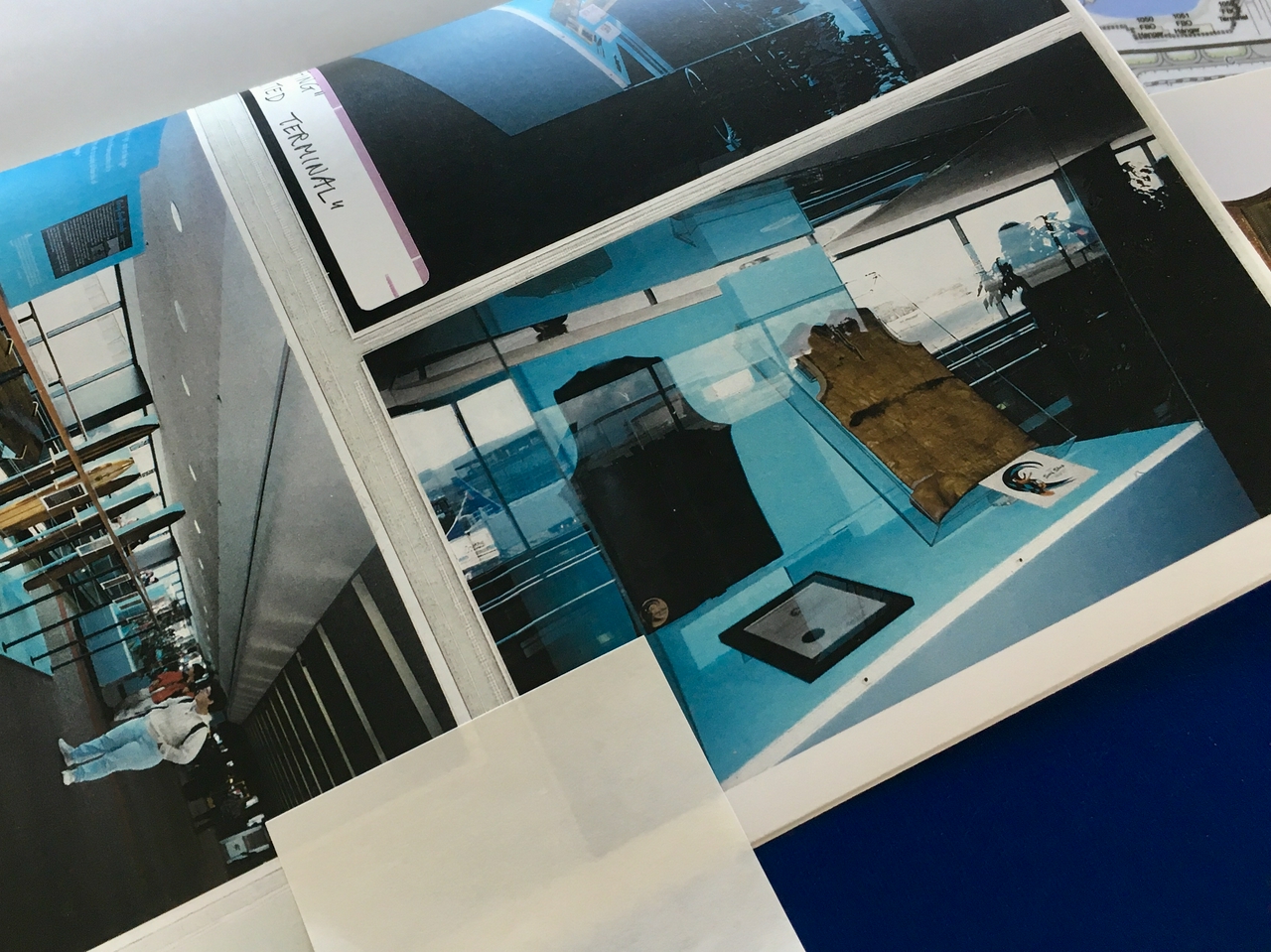Remembering the He’e Nalu : Wave Riding exhibition at SFO Museum

The other day curator John Hill stopped by my desk with a museum facilities report from 1998. The report contains photos of the various museum gallery spaces and the exhibitions on display around the time. One page of photos were from the He’e Nalu: Wave Riding exhibition and as we were looking at them John told me this story that I asked him to share with you, the internet!
–
In organizing the surfing history exhibition, He’e Nalu: Wave Riding, that opened at SFO in October 1997, we added a section on wetsuits. In addition to old beavertail tops from the 1960s and a 1990s cutting edge “Animal” full suit from O’Neill, that had a kind of reticulated musculature, we included a very special artifact in that surfing-wear category. It was a prototypical surfing vest that Jack O’Neill made in about 1952, while he still lived in San Francisco’s beachside Sunset District before discovering neoprene and moving to Santa Cruz to build his empire. Generously made available by his company for the exhibition, it occupied a place of honor in the storyline.
This sleeveless pullover with a partial zipper at the neck was made of whitish foam rubber sheeting about three-eighths of an inch thick that had yellowed to a nice buff color. Because it was open cell foam that would absorb water, it was faced on both sides with a thin sheet of translucent latex rubber. With almost fifty years of aging—and probably a few good saltwater soaks—the piece had delaminated quite a bit with the blistery skin floating above the core. It had a three-inch tear at one side and the brass zipper had the expected verdigris accretion, but overall it was still very much intact. It had taken on a beautiful shibui quality, and had the look and aura of an artifact that had been pulled through the knothole of history. Radiating narrative power, it reminded one of a Joseph Beuys sculpture. It was installed near a later, and much more familiar looking, black neoprene vest of the same design and maker.
The magical thing about O’Neill’s prototype vest was that it represented a distinct transitional moment between two eras. In cold water climates during the immediate postwar years, particularly Northern California, the very few who surfed would try anything to beat the numbing effects of fifty-two degree water. Long woolen underwear was dunked in waterproofing products, like Nikwax, so you could pretend you were warm, and a beach bonfire was kept stoked for frequent recharging. The vest we showed in the exhibition was the idea of a new type of material and product, a philosophical solid of sorts. And while the object itself was ultimately a fail, it was the blueprint for coming success. As legend has it according to O’Neill’s own account, his eureka moment shortly following the vest’s creation took place at San Francisco International Airport. After boarding a DC-3 for Los Angeles he looked down at the floor noticing a thin padding of black rubber sticking out from under the edge of the carpet. The material, a synthetic rubber invented by DuPont and named neoprene, helped insulate the heated passenger cabin from the frigid spaces below deck. It was smooth sealed, closed cell, flexible, quite strong, and proved fairly impervious to saltwater. Soon the era of the wetsuit was fueling the allure of surfing for the masses. It enabled unlimited access to the ocean’s littoral bounty year-round at all latitudes, because with a wetsuit, as O’Neill’s tagline would soon declare, “It’s always summer on the inside.”
